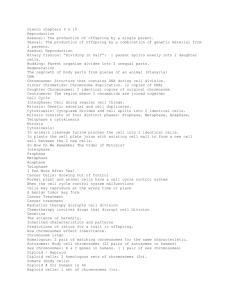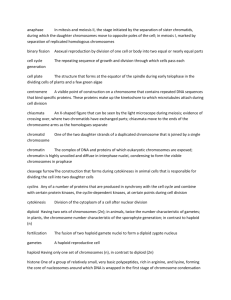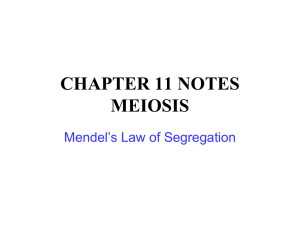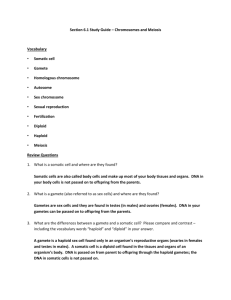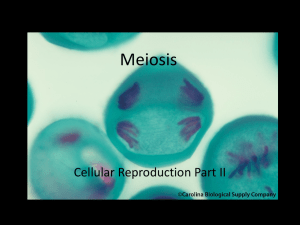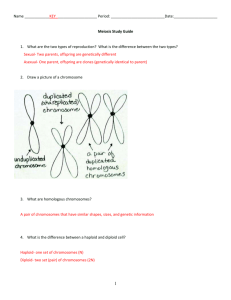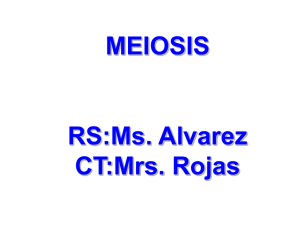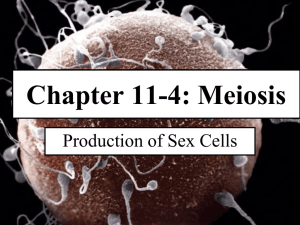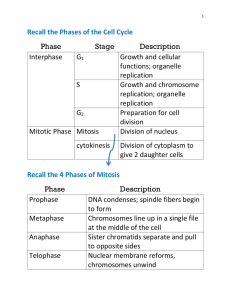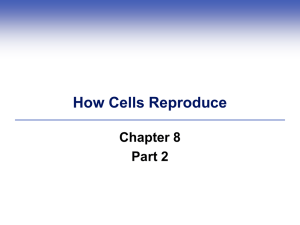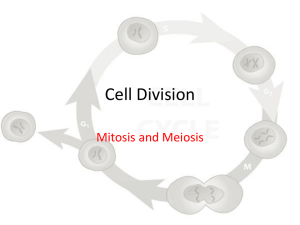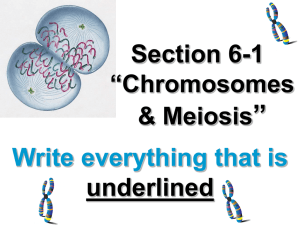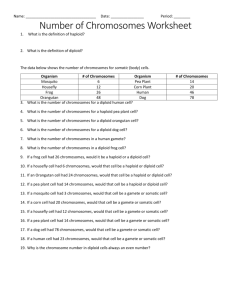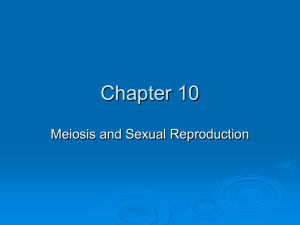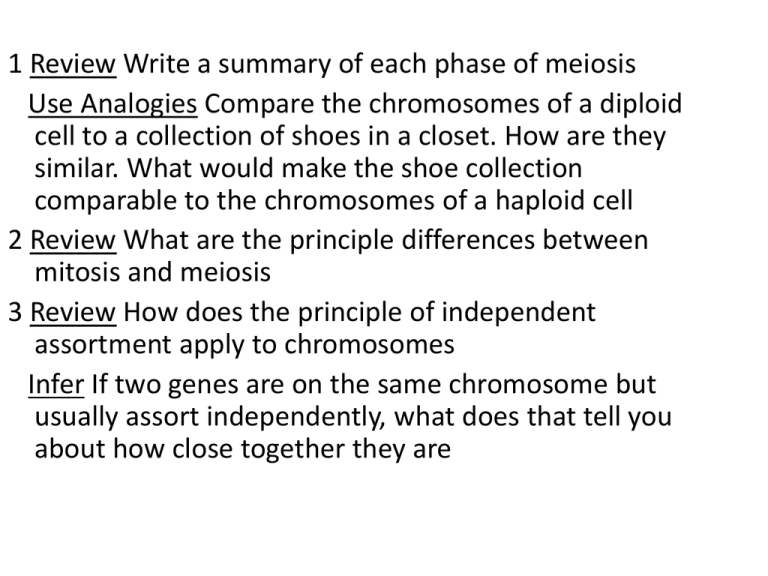
1 Review Write a summary of each phase of meiosis
Use Analogies Compare the chromosomes of a diploid
cell to a collection of shoes in a closet. How are they
similar. What would make the shoe collection
comparable to the chromosomes of a haploid cell
2 Review What are the principle differences between
mitosis and meiosis
3 Review How does the principle of independent
assortment apply to chromosomes
Infer If two genes are on the same chromosome but
usually assort independently, what does that tell you
about how close together they are
CH 11 INTRODUCTION TO GENETICS
11.4 Meiosis
Diploid Cells
Two sets of homologous chromosomes
One
chromosome 2 from mom and one chromosome 2
from dad
Somatic cells
All cells other than sex cells
“2n”.
Haploid Cells
Only one set of chromosomes
Gametes
“n”.
Meiosis
Similar in process to Mitosis
Forms gametes
Goes from 2n to n
Fertilization
goes from n to 2n
Meiosis I
Meiosis II
Create FOUR haploid cells from ONE diploid cell.
Meiosis Phases
Interphase
Prophase 1
Metaphase 1
Anaphase 1
Telophase 1
Cytokinesis
Prophase 2
Metaphase 2
Anaphase 2
Telophase 2
Cytokinesis.
Chromosomes
Each chromosome consists of
two copies ensuring that each
new cell will have the same
genetic information
The identical strands of DNA
are each called chromatids
and are held together by a
centromere.
Interphase 1
Chromosome replicate.
Prophase 1
DNA coils up into Chromosomes
Nuclear membrane breaks down
Chromosomes pair up into Tetrads
Tetrad
Homologous
pair.
Prophase 1
Crossing over may occur
Chromatids
of the homologous chromosomes cross
over one another
Crossed sections of the chromatids are exchanged.
Metaphase 1
Homologous Pairs Line up down center of cell.
Anaphase 1
Chromosome Pairs separate
Pulled to opposite poles of cell.
Telophase 1 and Cytokinesis
Nuclear membrane forms around each cluster of
chromosomes
Cytokinesis occurs forming two cells.
Now have two daughter cells that are genetically
different
Now are Haploid.
Prophase 2
Chromosomes become visible
Nuclear membrane breaks down
No additional crossing over.
Metaphse 2
Chromosomes line up in the center of each cell.
Anaphase 2
The paired chromatids separate.
Telophase 2 and Cytokinesis
Chromosomes arrive at poles
Nuclear envelope reforms
Cytokinesis occurs forming four cells.
Sperm
Male
Gamete
Ova or Ovum (egg)
Female
Fertilization
When
Gamete
the two gametes combine
Zygote
Fertilized
egg.
Mitosis
vs.
Creates 2 daughter cells
Cell is identical to
parent
Diploid (2n)
1 division
Produces ‘body cells’
(somatic cells)
Meiosis
Creates 4 daughter cells
Genetically different from
parent cell
Haploid (n)
2 divisions
Produces gametes
Crossing over
Genetic Variations.
You are “One in a Million”
Over 8 million possible
gamete combinations
from dad
Over 8 million possible
gamete combinations
from mom.
You are actually
“One in 64 TRILLION”
Gene Linkage
The closer two genes are located on a
chromosome the more likely those alleles will
occur together
Less
of a chance for crossing over to occur in between
Used to map out location of genes.
Gene Map
Haploid and diploid numbers are designated N and
2N. The table shows haploid or diploid numbers of a
variety of organisms.
Copy the table and complete it and then use it to
answer the questions on the next slide.
1.
2.
3.
4.
Calculate What are the haploid numbers for the
fern and onion plants
Interpret Data In the table, which organisms
diploid number is closest to a human
Apply Concepts Why is a diploid number always
even
Evaluate Which organism’s haploid and diploid
numbers do you find most surprising- why


